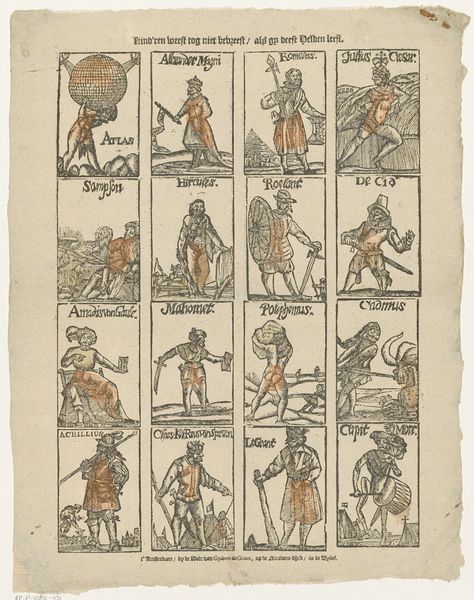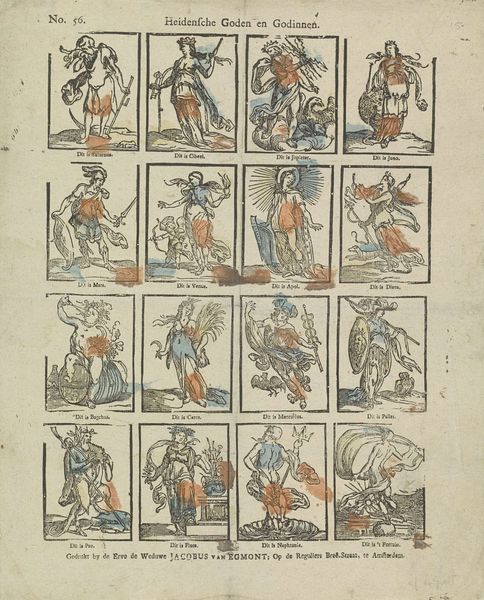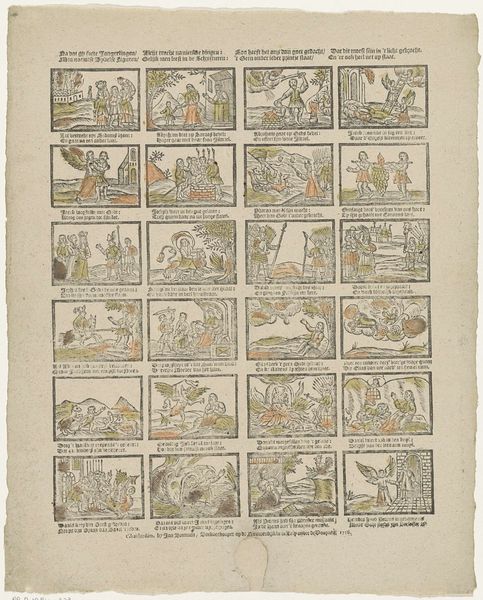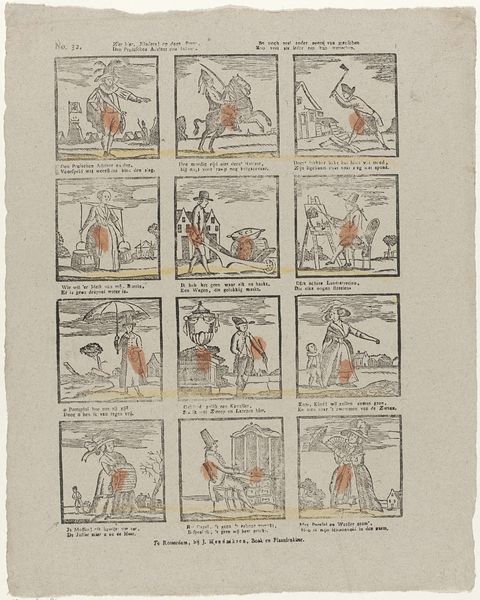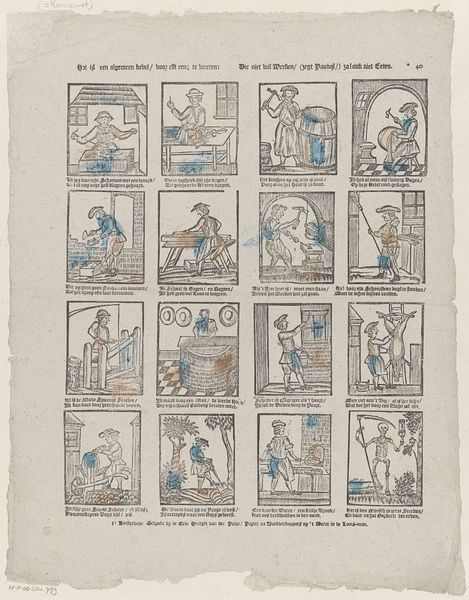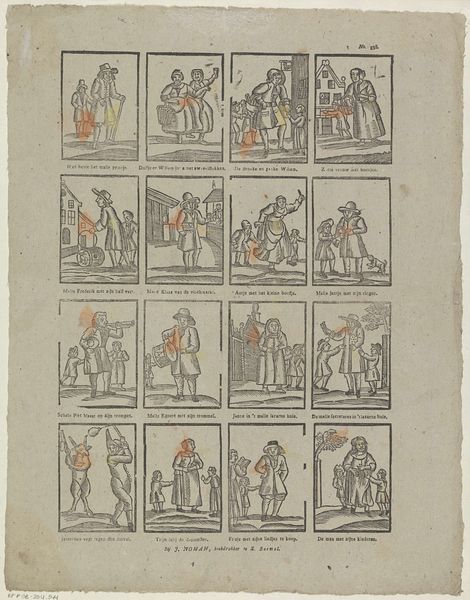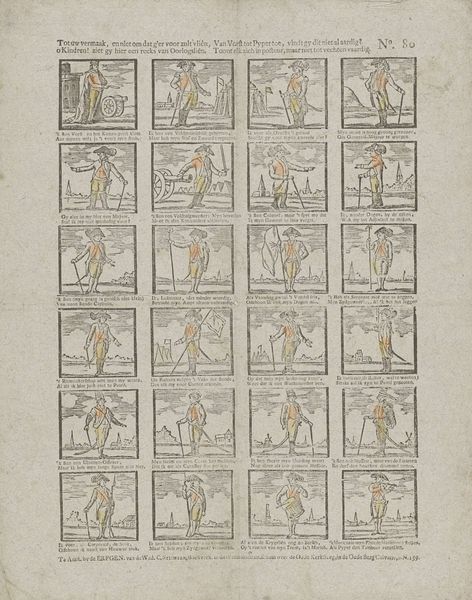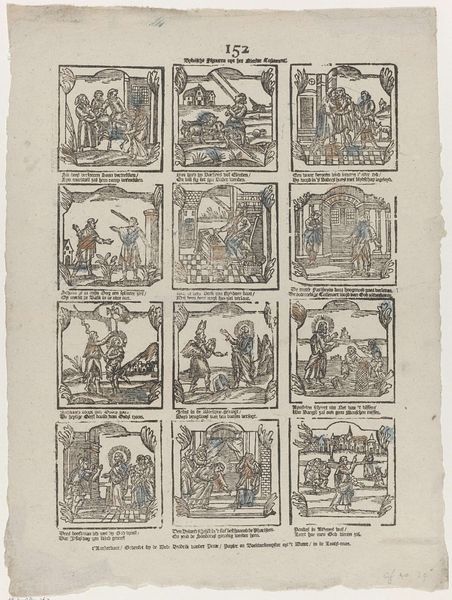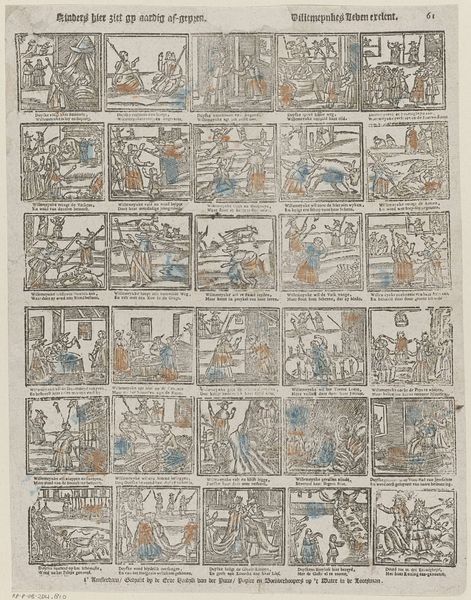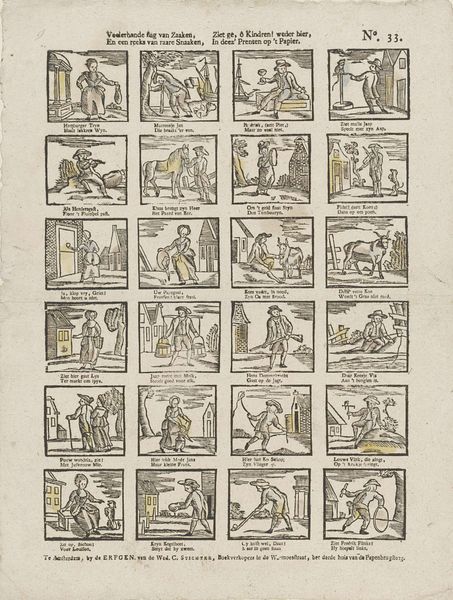
Hier in is voor u jeugd / die 't leezen staag beminnen / Te vinden nieuwen vreugd / Van Goden en godinnen, / En wel de voornaamst' van dien / die de heydens gunste bien 1765 - 1767
0:00
0:00
print, etching, engraving
# print
#
etching
#
figuration
#
genre-painting
#
history-painting
#
engraving
Dimensions: height 397 mm, width 315 mm
Copyright: Rijks Museum: Open Domain
Curator: This etching from between 1765 and 1767, whose title translates from Dutch to “Here in is for you youth / who constantly love to read / To find new joy / Of Gods and Goddesses, / And well the most important of those / who cherish the pagan favor,” printed by the widow Hendrik van der Putte, seems at first glance a series of small theatrical scenes. What's your impression? Editor: Chaotic. That’s the word that springs to mind. Each vignette is crammed with figures and objects, fighting for space. There's an overwhelming quality about the image, despite the small scale. I feel almost bombarded with visual information. Curator: And I believe that overwhelming quality is quite deliberate. Each figure is laden with symbolic attributes, referencing classical deities and allegorical figures, a common practice in the period that served both decorative and didactic purposes. Editor: It’s fascinating to see the gods filtered through the lens of 18th-century Dutch culture. But what exactly was the message intended to be delivered to young readers? Curator: The accompanying verses beneath each figure would elaborate upon each character's powers, attributes, and stories. It was not uncommon at the time to draw upon classical narratives as a way to explore ethical or moral principles, but using recognizable gods makes these messages so much more compelling and relatable. Editor: The application of color is interesting. There’s a rather blunt use of blue and orange applied to the figures that lends a peculiar and jarring energy. Curator: A rudimentary application of colour emphasizes specific, and sometimes rather obscure details that provide further context about the deity’s role and origin. And remember this work predates widespread color printing. Editor: It’s easy to see how these sorts of illustrations fueled the collective imagination, shaping cultural narratives by instilling classical figures with cultural meaning. It allowed the audiences of the day to familiarize themselves with iconic figures. Curator: Absolutely. As a visual medium, it also served a critical pedagogical role by shaping shared cultural understanding, making the visual component crucial. Editor: In a way, the print operates like a memory palace, encoding stories in visual forms to inspire, delight, and possibly instill moral lessons within youthful readers. Curator: Precisely. Its power rests in weaving a narrative and visual web that reflects, but also creates a vibrant collective cultural tapestry.
Comments
No comments
Be the first to comment and join the conversation on the ultimate creative platform.
